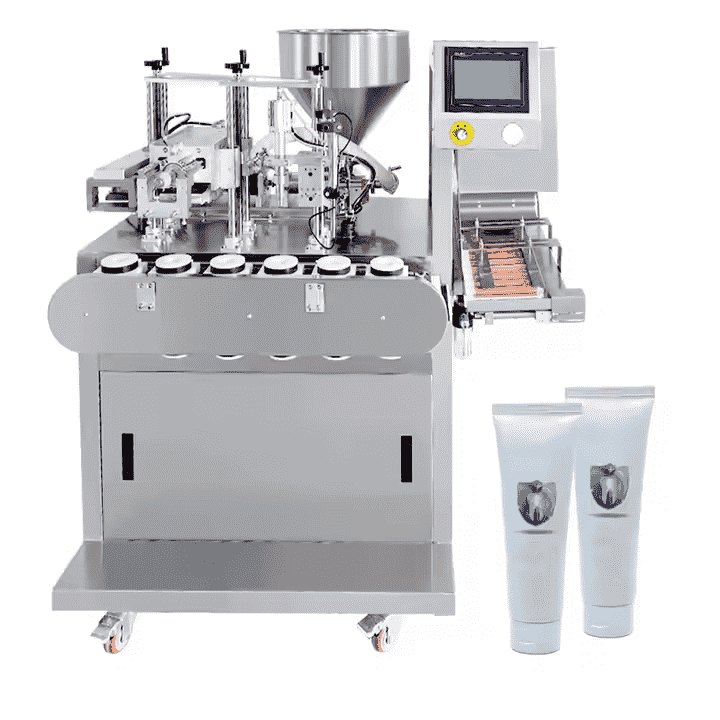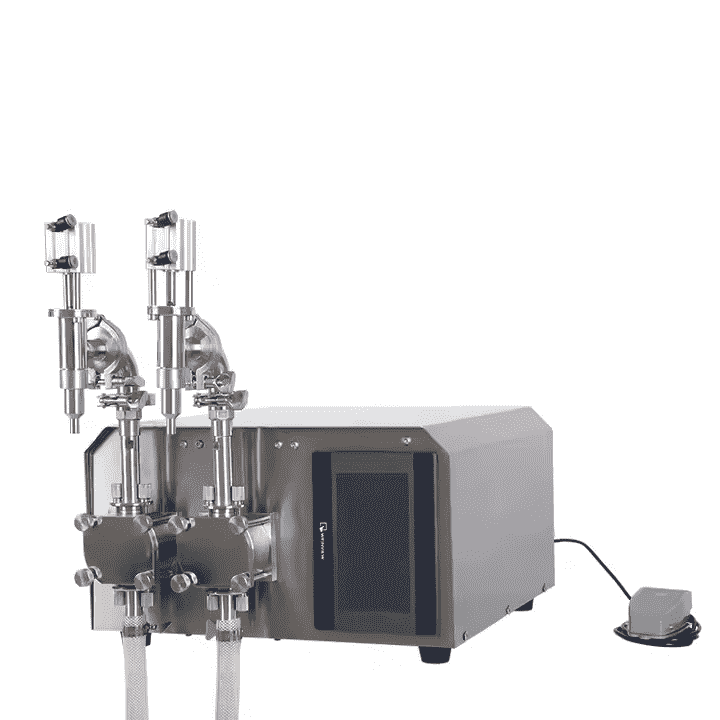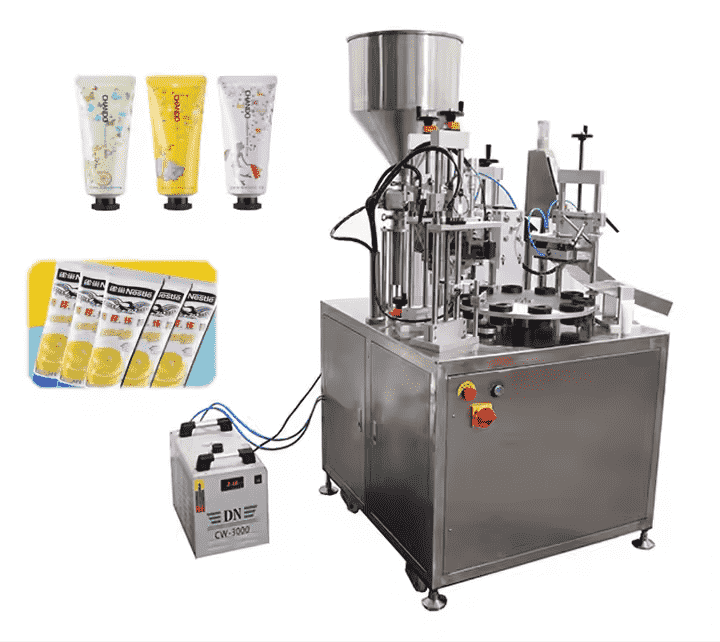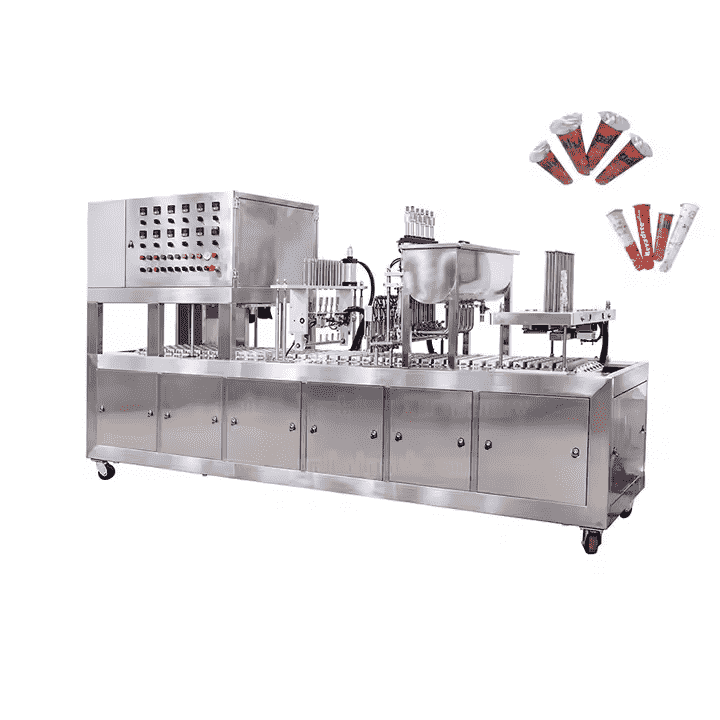As a popular packing method, tubes are widely used in cream packaging. So cream tube filling machines are necessary in various industries. Meanwhile, as more people buy skincare and personal care products, the demand for these machines is growing. If you are also interested in this machine, you’d better know
- What is a cream tube filler?
- How many types of cream tube fillers?
- How to choose a cream tube filler?
What is a Cream Tube Filler?
It is used to fill creams, gels, pastes, and other semi-solid products into tubes. It works from filling, sealing and cutting. This equipment ensures accurate and consistent filling. Each tube has the same amount of product. Depending on the tube material, the machine could use various sealing methods, such as heat sealing and ultrasonic sealing. This makes a proper sealing for different products. After filling and sealing, cutting is required. The machine trims excess material from the tube edges to create a smooth and uniform finish. This step ensures a professional look and prevents rough or uneven edges. Some models also print batch numbers or expiration dates on the tubes before releasing the final product.
Uses of cream tube filling equipment
This machines is applied in various industries for different uses.
- Pharmaceuticals. It is used to fill medicated creams, ointments, and gels.
- Cosmetics. It can package skincare products like lotions, face creams, and hair gels.
- Food Industry. It is used to fill products like mayonnaise, sauces, and honey into tubes.
- Chemical Industry. It mainly packs adhesives, lubricants, and other semi-solid chemicals.
Four Common Types of Cream Tube Filling Machines
They could be divided into many types based on automation levels and working principles.
Automatic cream tube filling machines

This is the most efficient and accurate model. It handles the entire process without human intervention. It automatically deals with the process from tube loading to sealing and coding. Automatic models feature high production capacity. They can process hundreds or even thousands of tubes per hour. So it is ideal for large-scale production. Automatic cream tube fillers often include features like automatic tube orientation, and advanced sealing methods. Moreover, they work well with all types of tubes, including plastic, aluminum, and laminated tubes.
However, these machines cost a lot and require a large production space. They are also more complex to maintain and operate, so skilled technicians are always needed.
Semi-automatic tube filling machines

Semi-automatic models require some manual assistance. But they still automate key steps like filling and sealing. During operation, operators load empty tubes into the machine. Once positioned, the machine accurately fills each tube, seals it, and ejects the final product. The main advantage of semi-automatic machines is their flexibility.
Compared to fully automatic models, they are smaller, more affordable, and easier to operate. This makes them ideal for small to medium-sized manufacturers. Semi-automatic models also suit businesses that produce multiple product sizes and need frequent adjustments. Since they require some manual handling, they allow manufacturers to change tube sizes and product types more easily.
However, their production speed is lower than automatic machines. So semi-automatic cream fillers are less efficient for large-scale operations.
Rotary tube filling machines

Rotary tube filling machines use a circular platform with multiple stations to complete the filling, sealing, and coding process in a continuous cycle. The tubes are placed in rotating holders. Holders move them through each processing stage. This system allows a steady production flow and ensures precise operation at every step.
These machines feature great efficiency. Since multiple tubes are processed at the same time, the machine maintains a high production rate. This setup reduces downtime and increases productivity. Rotary machines are also compact, so they are suitable for manufacturers with limited space.
But rotary tube filling machines have some limitations. They are usually optimized for specific tube sizes. It means frequent size changes may require additional tooling or adjustments.
Linear tube filling machines

These models operate in a straight-line motion. They move tubes step by step through the filling and sealing process. Unlike rotary machines, linear systems allow a more straightforward workflow. This is easier access to each station for maintenance and adjustments. Moreover, linear machines can handle different tube sizes with minimal changeover time. They often have adjustable holders that can accommodate a variety of tube dimensions. This makes them more versatile for manufacturers who need to switch between different products frequently.
In addition, linear machines can achieve highly precise filling and sealing results. So they are always used for pharmaceutical applications where accuracy is critical.
Their disadvantage is that linear machines often require more space because of a straight-line layout. Their speed may also be lower than some high-end rotary machines. Because each tube must complete all steps before the next tube enters the system.
How to Choose a Cream Tube Filler?
Tube material
Different machines work with different tube materials. Some machines are designed for only one type, while others can handle multiple materials. Take a cosmetics company for example. If they want to fill skincare creams into plastic tubes, a machine with heat sealing is better. Because these methods melt the tube’s open end and press it together to create an airtight seal. This ensures that creams and lotions remain fresh and do not leak during transportation or storage.
If the company decides to produce ointments in aluminum tubes, it will need a machine with a metal tube folding system. It bends and presses the tube’s end to seal it tightly.
Some advanced machines can handle both plastic and aluminum tubes. This flexibility is useful for businesses that plan to expand their product lines in the future.
Tube size
Tube size is also an important factor. Some machines are built for small tubes, such as 5ml, while others can fill larger tubes up to 200ml or more. If a manufacturer produces hand creams in 50ml tubes and facial cleansers in 120ml tubes, they need a machine that allows easy size adjustments. A machine with quick-change parts or an adjustable tube holder will save time. It also improves efficiency when switching between different tube sizes.
Budget
The price of tube filling machines varies based on automation level, speed, and extra features. While automatic machines cost more, they save money in the long run. Semi-automatic machines are cheaper but require more manual work. You should choose a machine that fits their your while meeting production needs.
The End
Now you must have a further understanding of cream tube fillers. If you want to invest in this equipment, the right one is important. You should consider the factors above and then select a suitable one for good packing quality.